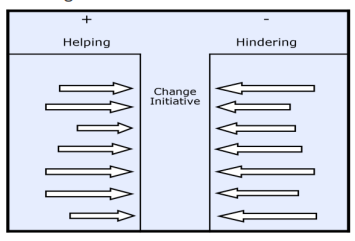Strategy and Change Management go Hand-in-Hand!
As you hone your strategies to transform, address each of the six change ingredients to capture value
as rapidly as possible. Learn more by viewing our Change Management Webinar or continue reading!
Now is the time of year when many organizations start talking strategy. Where will we grow and what
products, people and services do we need? How will we respond to competitors, regulators, employees
and customers? It’s fun and exciting to think about ways we can improve and hit the ground running in 2024 with improved strategies. A strategy without a plan for change is like a brain without arms and
legs. The reverse is also true, a change management approach without a vision for the future is also
destined for failure as people can not wrap their heads around WHY change and why NOW?

Effective change requires you communicate a clear and timebound vision. Without a well-articulated
vision, your team will be confused on how to move the strategy forward. People must understand why
the change is required – what happens if you don’t make this change in 2024? To bring the organization
with you, ensure everyone has the skills to make the jump. Proper incentives will shorten the time
between the CURRENT and the FUTURE state as people have an interest in moving quickly. Assigning the best resources to get the job done is a matter of thoughtful planning and timely resource allocation.
Resources include more than people – also consider the needed systems, money and processes to make
things happen. A well communicated action plan, whether developed through agile or traditional project
management methods, will ensure the team knows how they will move from the now into the new!
The fourth quarter planning cycle is an ideal time to think through not only strategies but your change
management approach for the new year. Let’s say your organization is planning to leverage artificial
intelligence to improve operational efficiency. You’ll need a plan to upgrade the skillset of the entire
organization while also abating the risk inherent in data sharing. Maybe you are looking to expand in a
market with a brand-new set of customers and requirements. A clear vision and description of the
target customer should be shared throughout your organization to enable cross functional teams to
bring the best your organization can offer to this new market.
Developing a change management approach is neither hard nor complicated – it is however often
forgotten. It is easy to become so enamored with our strategies and cerebral discussions that we
neglect the very people who will need to execute these strategies with new processes, areas of focus
and transformed teams. Decisions will be required as resources may need to be reallocated or raised
to a higher standard.

One tool to consider is the Force Field Analysis. Simple to deploy, it requires your team think through forces that
hinder vs help the transformation. In the example above,
perhaps a lack of knowledge about artificial intelligence is causing fear that impedes your team’s ability to grow their knowledge about this powerful tool.
Using proven change management techniques will ensure your team feels connected to the strategy while also building their confidence in their ability to do new things well. Consider the Force Field Analysis and other change management techniques as essential enablers to achieve your strategy!
